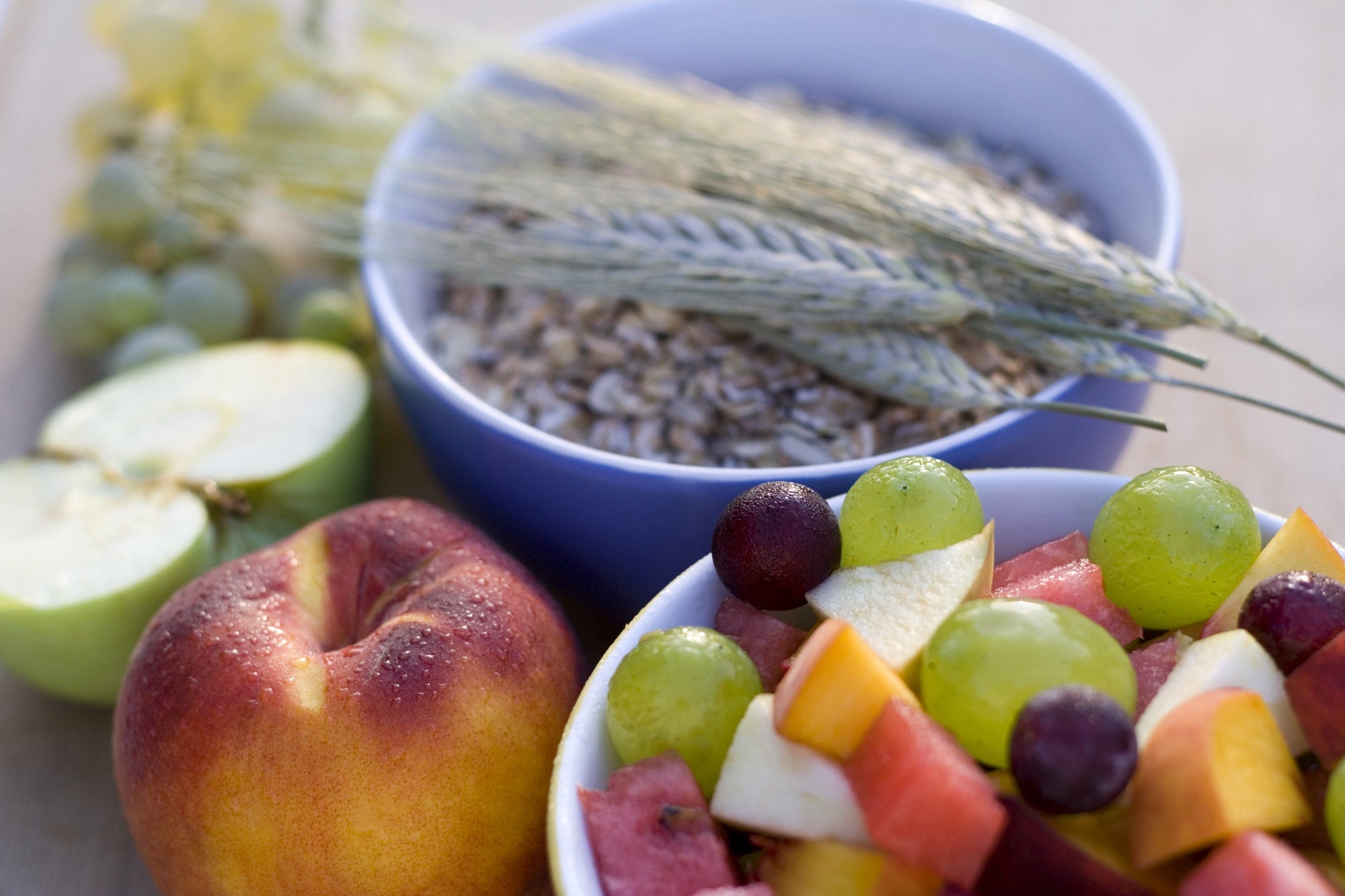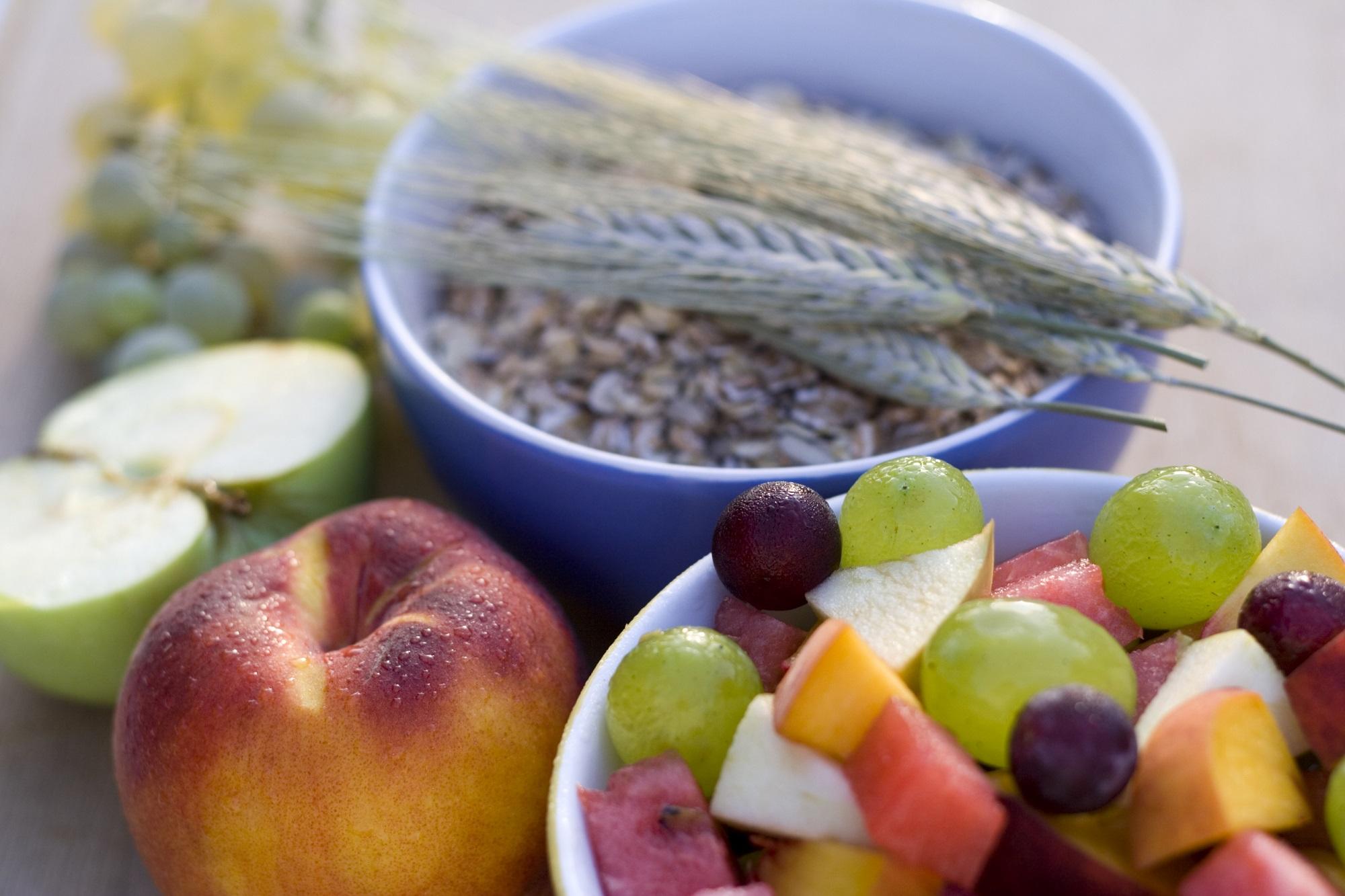
A Rough Guide to Dietary Fiber
When you consume plant foods, your body is only capable of digesting part of it. The roughage, or the indigestible part of the plant, is called fiber - it plays an important role in healthy digestion. Keep reading to learn about the different types of fiber, the health benefits it provides, and how much you need in your daily diet.
n
When you consume plant foods, your body is only capable of digesting part of it. The roughage, or the indigestible part of the plant, is called fiber - it plays an important role in healthy digestion. Keep reading to learn about the different types of fiber, the health benefits it provides, and how much you need in your daily diet. 
 To boost your daily intake, try some of these tasty tips:
To boost your daily intake, try some of these tasty tips:

Soluble vs. Insoluble
Through the process of digestion, your body breaks carbohydrates down into sugar molecules, which are then utilized for energy. The parts of the plant that your body can’t break down pass through your system undigested and are excreted in the form of stool. There are two types of dietary fiber – soluble and insoluble. Soluble is the type which can be dissolved in water and it adds bulk to your stools, helping to regulate your digestion. Insoluble does not dissolve in water and it helps to pass food through your digestive system, improving regularity and preventing constipation.What Are the Health Benefits?
An important component of most foods (aside from meats and dairy products), dietary fiber provides a variety of health benefits. Here are some of the most important:- Improved digestion - Adds bulk to stool to promote regular bowel movements and to prevent constipation.
- Heart health - Reduces LDL (bad cholesterol) levels in the bloodstream.
- Digestive regularity - Speeds up the process of eliminating waste from the body.
- Type 2 diabetes - Regulates sugar intake, helping to prevent blood sugar spikes for diabetics.
- Intestinal health - Helps to balance the pH level in intestines to prevent bacterial overgrowth and other digestive disorders.
- Stronger immunity - Easily fermented by beneficial bacteria in the gut, helps to improve digestive and immune health.
- Weight loss - Helps you to feel full for longer, aids in appetite suppression and weight loss.
- Chronic disease - May reduce the risk for heart attack, heart disease, and stroke.
How Much Do You Need?
The Academy of Nutrition and Dietetics recommends a daily intake of 25 grams for women and 38 grams for men. If you are over the age of 50, your daily recommendations may be a little lower – around 21 grams for women and 30 grams for men. Consuming at least 5 servings of fresh fruits and vegetables is usually enough to meet your daily recommended intake, and, because most foods contain both soluble and insoluble fiber, you don’t really have to worry about how much you are getting of each.Where Can You Get It?
Increasing your intake of this essential nutrient is easier than you might think. Whole grains, fresh fruits, vegetables, nuts, seeds, and legumes are all excellent sources. To boost your daily intake, try some of these tasty tips:
To boost your daily intake, try some of these tasty tips:
- Consume whole fruits and vegetables instead of juice
- Eat beans or other legumes rather than meat
- Swap out white bread and pasta for whole-grain alternatives
- Choose fresh fruits and veggies as snacks instead of chips or crackers
- Include one serving of whole grains or fresh vegetables in every meal
- Add toasted nuts or seeds as toppings for soups and salads
- Granola Breakfast Muffins
- Avocado Toast with Hemp Plus Bacon
- Lemon Chia Seed Tea Loaf
- Spicy Vegan Crispy Cauliflower Bites
- Qi'a Crusted Tofu
Would you like to be the first to hear about our new products and more? Sign up for our Nature’s Path Newsletter.

